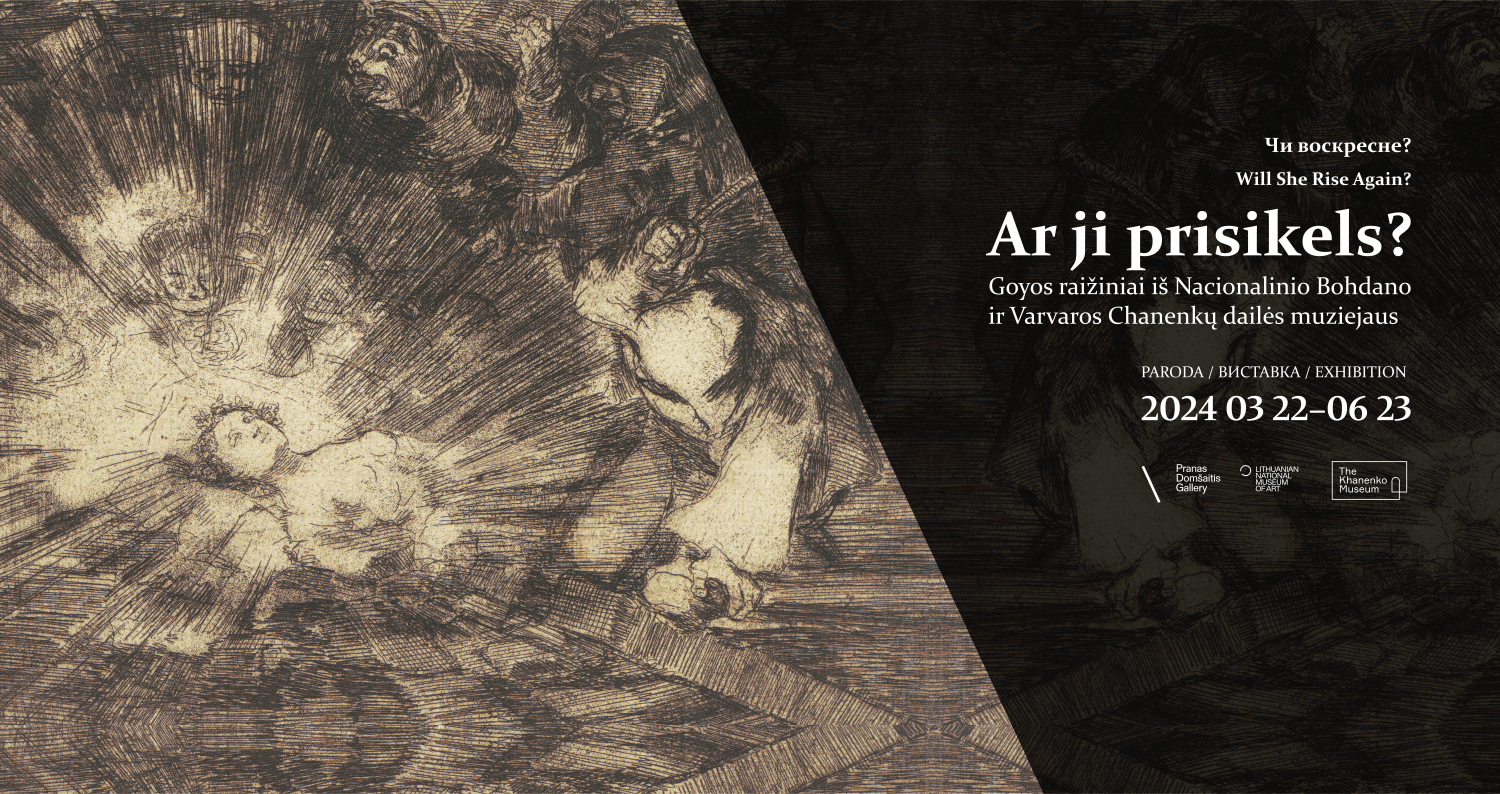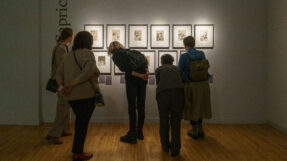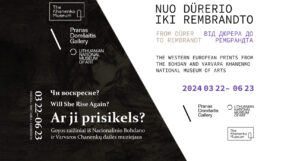Will She Rise Again? Goya’s Etchings from The Bohdan and Varvara Khanenko National Museum of Arts
 The Bohdan and Varvara Khanenko National Museum of Art presents the famous series of etchings “Caprichos” and “The Disasters of War” by Francisco Goya. These overly frank works are perceived as particularly relevant today. The artist proved that evil must be stopped, even when it pretends to be innocent. And he depicted war as the worst evil.
The Bohdan and Varvara Khanenko National Museum of Art presents the famous series of etchings “Caprichos” and “The Disasters of War” by Francisco Goya. These overly frank works are perceived as particularly relevant today. The artist proved that evil must be stopped, even when it pretends to be innocent. And he depicted war as the worst evil.
The main theme of the “Caprichos” series is the evil that rules humanity and constantly changes its face. Cruelty breeds even more cruelty, lechery destroys everyone who comes close to it, and judges become no better than the defendants. In the first sheets Goya depicted a mask, an attribute of the art of the 18th century that was supposed to create a sense of light play, a fun mystery. However, in “Caprichos”, the masquerade is not a celebration, but a continuous lie, a vice that triumphs, a thinly veiled evil.
The second part of the series features disgusting representatives of the devilish world. Some of them embody real human flaws, while others have no real-life prototypes, personifying the idea of universal evil. The end of the series is ambiguous. At dawn, the demons turn into humans, but fears about the next night do not disappear. It’s hard to imagine that their world will be good and just.
The “Caprichos” series went on sale on February 6, 1799. It aroused neither much interest nor indignation in society: only 27 sets were ordered. Goya presented all the printed sheets and engraving boards to King Charles IV of Spain in 1803.
“The Disasters of War” series are dedicated to the events of the Peninsular War of 1808-1814. The reason for it was the campaign to Portugal planned by Napoleon and King Charles IV of Spain. Napoleon led French troops into Spain, knowing that the king had no authority, and that educated people spoke French and admired French literature and philosophy. His real goal was to elevate his brother Joseph to the royal throne.
Napoleon did not intend to fight, the Spanish did not want the rule of foreigners. The uprising against the French quickly spread throughout the country and lasted six years. Unlike today, when barbarism is confronted by civilization, both sides fought a war without rules, rejecting the notions of humanity and morality.
Death dominates in all the etchings of the series, its ubiquity deprives the living of mercy and compassion. Goya depicts death as a terrible, senseless end of physical existence, not a noble death of a hero as a step towards immortality and eternal glory. A separate part of the series tells about the famine of 1811-1812 in Spain. The artist lived through these terrible times in the capital, where the famine was the worst.
The last sheets of the series relate to postwar life, when King Ferdinand VII abolished the liberal constitution adopted by the French, dissolved the parliament and began repressions against free-thinkers.
Goya gave the only printed copy of the work to his friend Seán Bermúdez. It was first printed by the Royal Academy of San Fernando in 1863, after the artist’s death. The author’s boards had undergone five more reprints by 1937.
Both series were purchased by the museum from a private person in 1941. The latest technological researches confirm that the engravings were printed from the author’s boards at the end of the 19th – the beginning of the 20th century.
Organizers: The Lithuanian National Museum of Art, the Bohdan and Varvara Khanenko National Museum of Arts
Project managers: Dr Arūnas Gelūnas, Julija Vaganova
Curators: Anfisa Doroshenko, Olha Honcharenko, Skaistis Mikulionis, Olena Shostak
Exhibition coordinators: Skaistė Marčienė, Aurelija Malinauskaitė
Exhibition architect Jurgis Dagelis
Exhibition designers: Loreta Uzdraitė, Marius Žalneravičius
Exhibition patrons: Minister of Culture of the Republic of Lithuania Simonas Kairys, Department for Culture of Kyiv City State Administration
Exhibition organized in partnership with: Embassy of the Republic of Lithuania in Ukraine, Embassy of the Republic of Lithuania in Poland, Embassy of Ukraine in the Republic of Lithuania, Customs of the Republic of Lithuania, Lithuanian Armed Forces, Lithuanian Riflemen’s Union, Lithuanian Police Force, Department of Culture of Kyiv City State Administration, National Police of Ukraine, Jonas Karolis Chodkevičius Charity and Support Foundation
General supporter AAS „BTA Baltic Insurance Company“
Supporters: founder of the Foundation Crown of Dukes Ostrogski, Honour Consul of the Republic of Lithuania in Kuhansk area Robertas Gabulas, AD REM Group, UAB Heat Transfer Company, Jonas Karolis Chodkevičius Charity and Support Foundation, Chef the Viking
33 Liepu st, LT-92145, Klaipėda, Lithuania
++370 46 410 412
domsaicio.galerija@lndm.lt















